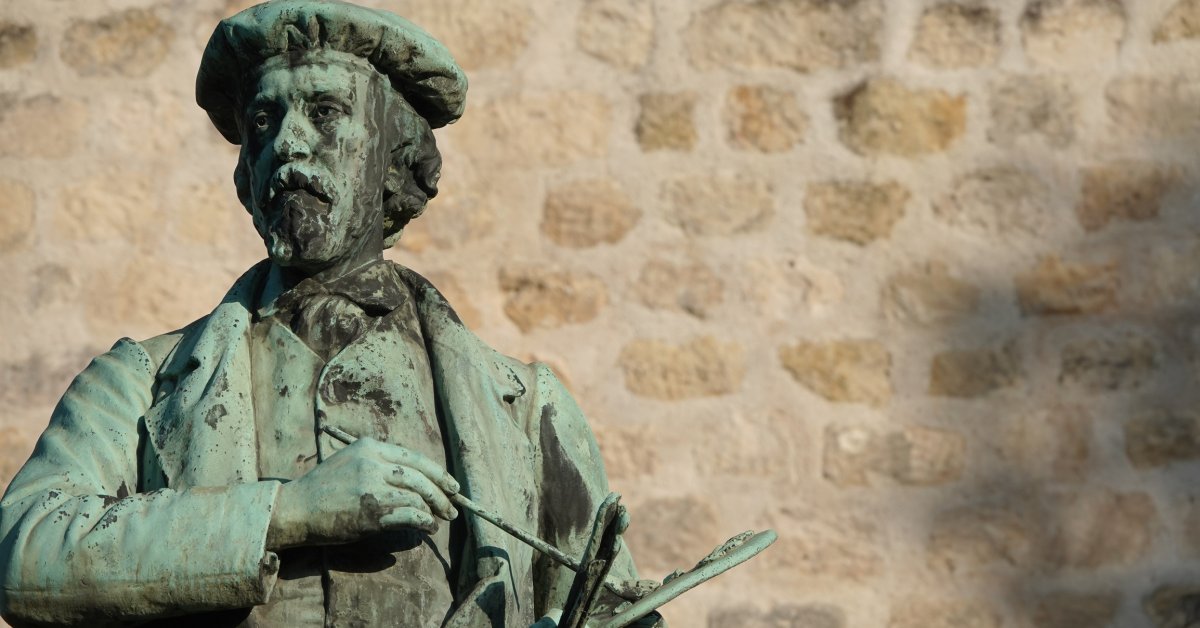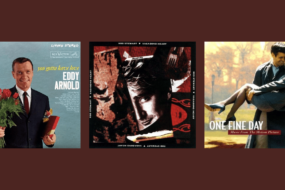
This article is published by AllBusiness.com, a partner of TIME.
Art is a universal language that reflects the essence of humanity—its struggles, triumphs, and aspirations. Throughout history, certain artists have risen to prominence by pushing boundaries and redefining the limits of creativity. Their works, often transcending time and culture, provide insight into the human experience and continue to inspire audiences worldwide.
This article, written using research assistance from AI, explores the world’s most influential artists. Art is deeply subjective, and individual favorites vary based on personal and cultural experiences. However, this compilation reflects artists whose works have had a profound impact on society, culture, and history. These are the figures whose artistic contributions have transcended boundaries, inspiring generations across the globe.
From Leonardo da Vinci’s masterful innovations during the Renaissance to Jackson Pollock’s groundbreaking techniques in abstract expressionism, each artist featured here has left an indelible mark on the art world and our imaginations. Their creations not only shaped artistic movements but also sparked meaningful conversations about society, humanity, politics, religion, love, and more.
Great Artists Throughout History
Leonardo da Vinci (1452–1519)
Leonardo da Vinci, the quintessential Renaissance man, remains one of the most celebrated artists in history. Known for his masterpieces and groundbreaking exploration of anatomy, mathematics, and engineering, Da Vinci’s legacy is unparalleled.
- Birthplace: Vinci, Italy
- Style: Renaissance
- Famous Works: “Mona Lisa” and “The Last Supper” are among his most iconic works, exemplifying his mastery of human expression and perspective.
- Impact: He pioneered techniques like sfumato and chiaroscuro, which revolutionized the art world.
- Versatility: Beyond painting, Da Vinci’s notebooks reveal inventions, anatomical sketches, and scientific inquiries.
Vincent van Gogh (1853–1890)
Van Gogh’s emotive and dynamic style redefined post-impressionist art. Despite struggling with mental health and financial hardship during his lifetime, his work has since gained immense recognition.
- Birthplace: Zundert, Netherlands
- Style: Post-impressionism
- Famous Works: “Starry Night” (estimated value of over $100 million), “Sunflowers,” and “The Bedroom” are celebrated for their vibrant colors and emotional depth.
- Impact: His expressive brushwork and unique perspective have influenced countless modern artists.
- Posthumous Fame: Though he sold only one painting during his life, Van Gogh’s works now fetch record-breaking prices.
- Cultural Influence: His life story embodies the struggles and triumphs of the creative spirit.
Pablo Picasso (1881–1973)
A revolutionary figure in modern art, Picasso’s innovative styles and prolific output have made him a household name worldwide.
- Birthplace: Málaga, Spain
- Style: Cubism and surrealism
- Famous Works: “Guernica” and “Les Demoiselles d’Avignon” showcase his groundbreaking approach to form and social commentary.
- Cubism: Along with Georges Braque, he co-founded Cubism, reshaping the way art interprets reality.
- Versatility: Picasso mastered multiple mediums, from painting to sculpture and ceramics.
- Social Activism: Works like “Guernica” reflect his engagement with political and humanitarian issues.
Frida Kahlo (1907–1954)
Frida Kahlo’s deeply personal and symbolic paintings have made her a global icon of resilience and self-expression.
- Birthplace: Coyoacán, Mexico City, Mexico
- Style: Surrealism and magic realism
- Famous Works: “The Two Fridas” (valued at $35 million) and “Self-Portrait with Thorn Necklace and Hummingbird” explore identity, pain, and cultural heritage.
- Themes: Her art explores themes of gender, postcolonialism, and the human condition.
- Cultural Identity: Kahlo’s work reflects her Mexican heritage and pride.
- Legacy: She remains an enduring symbol of feminism and individuality.
Andy Warhol (1928–1987)
The leading figure in the pop art movement, Andy Warhol challenged traditional notions of art by elevating consumer culture and mass production into iconic works.
- Birthplace: Pittsburgh, Pennsylvania, USA
- Style: Pop art
- Famous Works: “Campbell’s Soup Cans” and “Marilyn Diptych” (valued at over $195 million combined) symbolize the intersection of art and commerce.
- Innovation: Warhol popularized screen printing as an artistic medium.
- Cultural Reflection: His art critiques celebrity culture and consumerism.
- Influence: Warhol redefined the boundaries of what art could be, seeing beauty in the common, influencing generations of artists.
Salvador Dalí (1904–1989)
A master of surrealism, Salvador Dalí is known for his eccentric personality and dreamlike, often bizarre, imagery.
- Birthplace: Figueres, Spain
- Style: Surrealism
- Famous Works: “The Persistence of Memory” (valued at $60 million) and “The Elephants” exemplify his imaginative and otherworldly vision.
- Themes: Dalí explored themes of time, dreams, and the subconscious.
- Impact: His bold, unconventional approach to art influenced both Surrealism and popular culture.
- Legacy: Dalí’s work continues to captivate audiences and expand the boundaries of artistic interpretation.
Michelangelo (1475–1564)
Michelangelo Buonarroti, a towering figure of the Italian Renaissance, is renowned for his sculptures, paintings, and architectural designs.
- Birthplace: Caprese, Italy
- Style: Renaissance
- Famous Works: The Sistine Chapel Ceiling, “David,” and “Pietà” are enduring masterpieces.
- Sculptural Mastery: His marble sculptures are celebrated for their intricate detail and lifelike forms.
- Impact: Michelangelo’s work epitomizes the ideals of the Renaissance and continues to be a benchmark of artistic excellence.
- Legacy: His contributions have influenced countless artists and remain integral to Western art history.
Claude Monet (1840–1926)
Claude Monet, a pioneer of Impressionism, is celebrated for his innovative use of light and color.
- Birthplace: Paris, France
- Style: Impressionism
- Famous Works: “Water Lilies” series (valued at over $110 million for individual pieces), “Impression, Sunrise,” and “Woman with a Parasol” are hallmarks of his style.
- Impressionism: Monet’s works capture fleeting moments, emphasizing atmosphere and natural beauty.
- Technique: His loose brushwork and focus on light inspired an entire movement.
- Global Influence: Monet’s art remains a favorite among collectors and art enthusiasts worldwide.
Georgia O’Keeffe (1887–1986)
Known as the “mother of American modernism,” Georgia O’Keeffe’s distinctive style captures the essence of natural forms.
- Birthplace: Sun Prairie, Wisconsin, USA
- Style: Modernism
- Famous Works: “Red Canna,” “Jimson Weed/White Flower No. 1” (sold for $44.4 million), and her abstract cityscapes.
- Themes: Her art emphasizes the beauty of flowers, landscapes, and the American Southwest.
- Impact: O’Keeffe paved the way for female artists in a male-dominated field.
- Legacy: Her unique perspective continues to resonate, influencing modern art and design.
Jackson Pollock (1912–1956)
Jackson Pollock revolutionized modern art with his innovative drip painting technique, a hallmark of abstract expressionism.
- Birthplace: Cody, Wyoming, USA
- Style: Abstract expressionism
- Famous Works: “No. 5, 1948” (valued at $140 million) and “Blue Poles” epitomize his chaotic yet controlled style.
- Technique: His method of pouring and splattering paint broke traditional conventions.
- Impact: Pollock’s work represents the raw emotional energy of post-war America.
- Legacy: He remains an enduring symbol of creative freedom and innovation.
Pierre-Auguste Renoir (1841–1919)
Pierre-Auguste Renoir, one of the leading figures of impressionism, is celebrated for his vibrant and light-filled depictions of everyday life.
- Birthplace: Limoges, France
- Style: Impressionism
- Famous Works: “Dance at Le Moulin de la Galette” (valued at $78 million) and “Luncheon of the Boating Party” showcase his joyful and warm portrayals of social gatherings.
- Techniques: Renoir’s use of soft brushwork and a luminous color palette set his works apart.
- Themes: His art often celebrates beauty, intimacy, and human connection.
- Legacy: Renoir’s works remain beloved for their ability to capture the essence of joie de vivre.
Paul Cézanne (1839–1906)
Paul Cézanne, often called the “father of modern art,” laid the groundwork for 20th-century artistic movements with his innovative approaches.
- Birthplace: Aix-en-Provence, France
- Style: Post-impressionism
- Famous Works: “Mont Sainte-Victoire” and “The Basket of Apples” (valued at over $60 million) exemplify his exploration of form and color.
- Techniques: Cézanne’s work bridged impressionism and cubism, emphasizing geometric simplification and bold color contrasts.
- Influence: His ideas deeply influenced artists like Picasso and Matisse.
- Legacy: Cézanne’s vision transformed the way art depicts reality and abstraction.
Conclusion on the World’s Most Influential Artists
Art is a mirror of human creativity, emotion, and thought. The artists highlighted here have not only shaped the art world but have also influenced broader cultural, social, and historical narratives. From Da Vinci’s Renaissance innovations to Pollock’s abstract expressionism, their legacies continue to inspire and provoke.
Each of these artists has left a unique imprint on the fabric of human culture. Their works transcend their historical contexts, sparking new interpretations and conversations across generations. The power of their creativity not only challenges conventional norms but also provides a window into the human experience, emotions, and aspirations.
As society continues to evolve, the relevance of these artists and their works remains steadfast. Their ability to connect with audiences through time underscores the universality of art and its profound impact on the world. These luminaries exemplify the revolutionary power of art and its role in shaping our collective narrative and cultural identity.
Related Articles:
About the Authors:
Richard D. Harroch is a Senior Advisor to CEOs, management teams, and Boards of Directors. He is an expert on M&A, venture capital, startups, and business contracts. He was the Managing Director and Global Head of M&A at VantagePoint Capital Partners, a venture capital fund in the San Francisco area. His focus is on internet, digital media, AI and technology companies. He was the founder of several Internet companies. His articles have appeared online in Forbes, Fortune, MSN, Yahoo, Fox Business and AllBusiness.com. Richard is the author of several books on startups and entrepreneurship as well as the co-author of Poker for Dummies and a Wall Street Journal-bestselling book on small business. He is the co-author of a 1,500-page book published by Bloomberg on mergers and acquisitions of privately held companies. He was also a corporate and M&A partner at the international law firm of Orrick, Herrington & Sutcliffe. He has been involved in over 200 M&A transactions and 250 startup financings. He can be reached through LinkedIn.
Dominique Harroch is the Chief of Staff at AllBusiness.com. She has acted as a Chief of Staff or Operations Leader for multiple companies where she leveraged her extensive experience in operations management, strategic planning, and team leadership to drive organizational success. With a background that spans over two decades in operations leadership, event planning at her own start-up and marketing at various financial and retail companies. Dominique is known for her ability to optimize processes, manage complex projects, and lead high-performing teams. She holds a BA in English and Psychology from U.C. Berkeley and an MBA from the University of San Francisco. She can be reached via LinkedIn.
Copyright (c) by Richard D. Harroch. All Rights Reserved.








